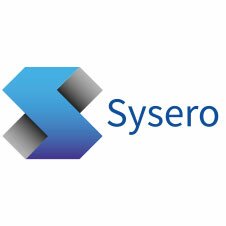Sysero: Is AI really helping solve legal operational challenges
This week a Google engineer claimed that his company had developed a sentient AI. Google denied that their AI was sentient, but rather that it used “large language models.” In the past several years, artificial intelligence (AI) has been the focus of a lot of hype in the legal space. It’s been touted as the cure-all for everything from organising and summarising documents to conducting due diligence and reviewing contracts. However, the hype has been a bit misleading. Whilst applications like Siri and Alexa use AI, it is their access to massive amounts of data that makes them work so well, rather than a step-change in technology that has created a new breed of self-reasoning applications.
While it’s true that legal technology is revolutionising the way lawyers work, AI has little to do with solving the day-to-day challenges that legal practitioners and law firms face. Whilst it can analyse documents to look for patterns, the absence of access to terabytes of data mean its applications and abilities within the legal space are limited. In reality, it’s automation that’s helping firms to overcome operational challenges, drive efficiencies, and power improved ways of working. While the term Legal AI offers a visionary, bold, and frankly far-off answer to legal sector challenges, it’s Legal Automation that’s solving the problems of today and tomorrow.
What is artificial intelligence?
IBM defines AI as “any system capable of simulating human intelligence and thought processes.” However, the term AI is often misleading when it comes to legal technology. There are many technology solutions that are touted as Legal AI because they use robots to solve problems. However, a true AI system has the ability to think, reason, and learn in the same way a person does. It essentially replaces the need for a human by replicating their own capabilities, including learning, reasoning, and self-correction. There’s no legal solution provider today that has that level of intelligence.
Rather, many technology providers have adopted the term AI as an easy and hype-driven way to market robotic process automation and workflow automation.
What is robotic process automation?
Robotic process automation (RPA) is technology, governed by business logic and structured inputs, that automates repetitive tasks by mimicking the way people work. Unlike AI, it works in conjunction with people, rather than in place of. RPA leverages rule-based software to perform business process activities at scale, giving lawyers and staff more time back in their day. In the legal space, RPA is most often used to automate manual tasks such as extracting data and conducting database lookups and legal research.
What is workflow automation?
The primary goal of workflow automation is to optimise processes by replacing manual tasks with technology that performs all or part of a process. In the legal space, workflow automation offers a real-world solution to solving some of the biggest operational challenges, such as streamlining client intake, conducting KYC and compliance checks, generating and negotiating contracts, and producing transactional documents.
Some workflow automation solutions leverage RPA to simplify repetitive tasks as part of a process, such as automating background checks as part of a KYC workflow.
Why Workflow Automation is the Key to Solving Legal Challenges
The main difference between workflow automation and AI is that workflow automation offers firms a ready-to-use automated tool to solve today’s challenges, while AI promises an autonomously-run firm of the future.
Today’s legal clients demand greater efficiency, transparency, and value. To remain competitive in the modern legal landscape, firms must optimise their processes to best serve their clients. Law firms can apply automation to most types of workflows to deliver better service, whilst maintaining compliance.
For example, here are some of the most common workflow automation use cases in law firms:
-
- Client Intake: KYC/AML Workflows use workflow automation to capture client information, automatically conduct risk assessments, and quickly onboard clients.
- Risk and Compliance: Risk and Compliance Workflows embed best practices and compliance into everyday processes to mitigate and manage risk.
- Document Production: Document Production Workflowsleverage workflow automation to streamline the creation of document bundles or packs – with no coding required.
- Client Collaboration:Client Workflow Portals use workflow automation to enable firms to deliver transaction-specific documents to clients through branded portals.
- Knowledge Management: Knowledge Management Workflows enable firms to maintain the quality of their shared knowledge.
Workflow Automation & Sysero
While it may be true that AI will revolutionise legal work – that moment has not yet arrived. Rather, today’s firms need to embrace workflow automation to ensure they can stay competitive in the evolving marketplace – and still be around to witness the power of AI if and when it arrives.
At Sysero, we offer a low-code workflow automation solution that’s designed to help firms transform and streamline their core business processes. By automating business-critical processes, Sysero can help your firm apply business rules more consistently, accelerate revenue, and deliver improved service.
To learn more or schedule a demo, get in touch with our team.



